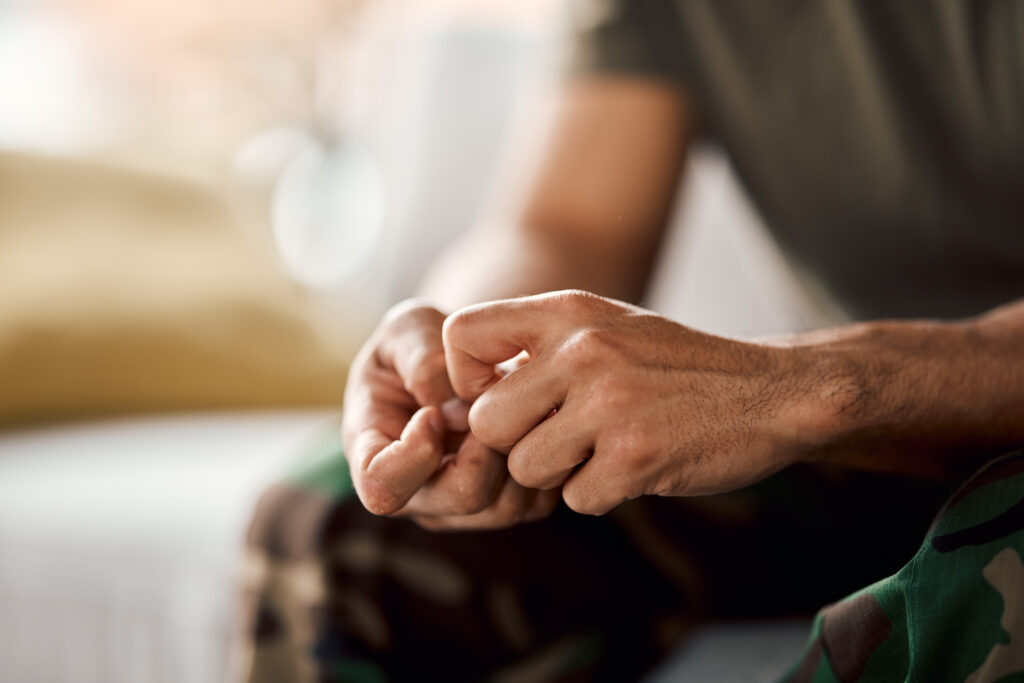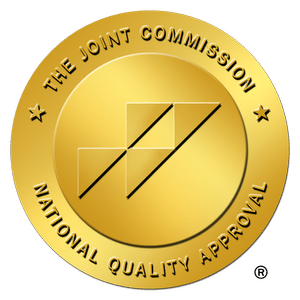The post covers professional treatment options like therapy and medication, alongside self-help techniques such as mindfulness and lifestyle changes. It’s a comprehensive guide for anyone seeking to understand and manage the challenges of GAD.
What is Generalized Anxiety Disorder
Generalized Anxiety Disorder (GAD) is a prevalent and persistent mental health condition characterized by excessive, uncontrollable worry about everyday issues.
This anxiety is more intense than the typical anxiety people experience day-to-day.
It’s chronic and fills one’s day with exaggerated worry and tension, even when there is little or nothing to provoke it.
Common symptoms include persistent nervousness, restlessness, and a sense of impending danger or doom.
Physical manifestations can include fatigue, muscle tension, trembling, sweating, nausea, or irritability.
For those living with GAD, learning to manage anxiety isn’t just beneficial; it’s essential for maintaining a healthy, fulfilling life.
Unmanaged anxiety can spiral, affecting personal relationships, job performance, and overall well-being.
Coping strategies do more than just mitigate symptoms; they empower individuals to regain control over their mental state, improving their quality of life.
This article aims to explore various coping strategies for GAD. I’ll delve into professional treatment options like therapy and medication, and discuss self-help techniques including mindfulness, relaxation practices, and lifestyle changes.
I’ll also cover cognitive techniques for managing negative thoughts, the importance of a strong support system, and what to do when standard coping strategies fall short.

Understanding GAD
Generalized Anxiety Disorder (GAD) stands distinct from normal anxiety, which is a natural response to stress or unfamiliar situations.
While typical anxiety is transient and linked to specific situations, GAD persists and often lacks a clear or proportional cause.
It’s a chronic condition where the worry is excessive and difficult to control, leading to a constant state of heightened tension, even in the absence of stressors.
The causes of GAD are multifaceted, involving a complex interplay of genetic, environmental, and psychological factors.
- Genetics may predispose an individual to anxiety disorders, suggesting a hereditary component.
- Environmental factors, such as traumatic events or prolonged exposure to stressful situations, can also contribute to the development of GAD.
- Psychological aspects, including an individual’s temperament, coping mechanisms, and past experiences, play a crucial role in shaping their susceptibility to GAD.
GAD’s impact on daily life is pervasive and debilitating.
It can impair one’s ability to concentrate, disrupt sleep patterns, and strain personal and professional relationships.
Individuals with GAD may struggle with decision-making, constantly fearing the worst outcomes.
This chronic worry and tension can lead to physical symptoms like fatigue, headaches, or muscle stiffness.
The persistent anxiety can also increase the risk of other mental health issues such as depression.
GAD, therefore, extends its effects far beyond occasional worry, affecting virtually all aspects of an individual’s life.
Professional Treatment Options
Professional treatment options for Generalized Anxiety Disorder (GAD) are crucial in managing its symptoms effectively. Several main approaches are used:
Psychotherapy, with Cognitive-Behavioral Therapy (CBT).
CBT helps individuals identify and challenge the negative and often irrational thought patterns that fuel their anxiety.
By altering these thought processes, CBT aims to change the way individuals react to anxiety-provoking situations, thereby reducing the symptoms of GAD.
Acceptance and Commitment Therapy (ACT)
ACT and mindfulness-based therapies can also be beneficial, helping patients to accept their anxiety without judgment and to live a fulfilling life despite it.
ACT helps individuals stay focused on the present moment and accept thoughts and feelings without judgment.
It aims to help a person move forward through difficult emotions so they put energy into healing instead of dwelling on the negative.
Anti-anxiety Medications
Selective serotonin reuptake inhibitors (SSRIs) and benzodiazepines, can help to alleviate the symptoms of anxiety.
SSRIs work by increasing serotonin levels in the brain, which can improve mood and reduce anxiety.
Benzodiazepines provide rapid relief from anxiety symptoms but are typically used for short-term management due to risks of dependence.
These medications, while effective, may have side effects such as drowsiness, dizziness, or nausea, and should be taken under close medical supervision.
Professional Help
The importance of professional diagnosis and treatment cannot be overstated. GAD can often be mistaken for other conditions, and self-diagnosis can lead to inappropriate treatment.
A mental health professional can provide a proper diagnosis and tailor a treatment plan that includes the most effective therapies and medications for the individual’s specific needs.
Seeking professional help is a critical step towards managing GAD and improving overall quality of life.

Self-Help Strategies
Self-help strategies play a vital role in managing GAD, complementing professional treatments like therapy and medication.
Mindfulness Meditation and Yoga
Among these strategies, mindfulness and relaxation techniques are highly effective in reducing anxiety symptoms.
Studies have shown that eight weeks of meditation can significantly alter the stress response in people with GAD, and this is evident in the levels of stress hormones and inflammatory markers.
Mindfulness involves focusing one’s attention on the present moment, observing thoughts and feelings without judgment.
This practice can be achieved through meditation, where one learns to sit quietly, often focusing on the breath, and gently guiding the mind back when it wanders.
This process fosters a state of calmness and clarity, helping to break the cycle of constant worry characteristic of GAD.
Additionally, yoga combines physical postures, controlled breathing, and meditation, offering a holistic approach to relax the body and mind.
Deep Breathing Exercises
These are another powerful tool. Techniques like diaphragmatic breathing encourage full oxygen exchange, slowing down the heartbeat and stabilizing blood pressure, which can counteract the body’s stress response.
Exercise
This is another crucial self-help strategy. Regular physical activity releases endorphins, natural brain chemicals that enhance your sense of well-being.
Exercise also leads to improved sleep, reduced stress levels, and increased energy and stamina.
Even moderate activities like walking or swimming for 30 minutes a day can significantly alleviate anxiety symptoms.
Healthy Lifestyle Choices
These have a profound impact on managing GAD. Adequate sleep is essential, as a lack of it can exacerbate anxiety.
Creating a sleep-conducive environment, maintaining a regular sleep schedule, and avoiding screens before bed can improve sleep quality.
Diet also plays a role; balanced meals, staying hydrated, and limiting or avoiding caffeine and alcohol can help stabilize mood and energy levels.
Caffeine and alcohol, in particular, can trigger or worsen anxiety symptoms and disrupt sleep patterns.
Incorporating these self-help strategies into daily life can significantly aid in managing GAD. They empower individuals to take active steps in their journey towards wellness, fostering resilience against the challenges posed by anxiety.

Cognitive Techniques
Cognitive techniques are powerful tools in the management of GAD, enabling individuals to alter their thought patterns and responses to anxiety-inducing stimuli.
CBT
One key technique is challenging negative thoughts, a cornerstone of Cognitive-Behavioral Therapy (CBT).
This involves identifying irrational and anxiety-provoking thoughts, analyzing their validity, and replacing them with more balanced, realistic thoughts.
For instance, a thought like “Everything will go wrong” can be countered with “I cannot predict the future, but I can cope with challenges.”
This reevaluation helps in reducing the intensity of anxiety and fosters a more positive mindset.
Journaling
This is another effective cognitive technique. Keeping a daily journal allows individuals to express their thoughts and feelings, providing clarity and insight into their anxiety triggers.
It serves as a reflective tool, enabling the identification of patterns and triggers over time.
Journaling also offers a therapeutic outlet for venting emotions, which can be cathartic and help in managing overwhelming feelings.
Goal Setting
Setting realistic goals is crucial for individuals with GAD.
Anxiety can often lead to either setting overly ambitious goals, leading to disappointment and increased anxiety, or avoiding goal-setting altogether due to fear of failure.
Establishing small, achievable goals and gradually building up to larger ones can foster a sense of accomplishment and control.
This process involves breaking down larger goals into manageable steps, setting clear, measurable objectives, and acknowledging and celebrating progress.
Realistic goal-setting helps build confidence and resilience, making it easier to cope with anxiety in various aspects of life.

Building a Support System
Building a strong support system is crucial for those coping with GAD. The presence of understanding family and friends provides a comforting safety net.
They offer emotional support, understanding, and a listening ear, which can significantly alleviate feelings of isolation and stress.
Additionally, joining support groups where members share similar experiences can be incredibly validating and empowering.
These groups provide a sense of community, along with practical advice and coping strategies.
Seeking professional support, such as therapists or counselors, is equally important. They offer expert guidance, tailor coping strategies to individual needs, and help navigate the complexities of GAD with empathy and expertise.

When Coping Strategies Don’t Work
When coping strategies for GAD seem insufficient, it’s important to recognize the need for additional help.
Indicators that current methods are inadequate include persistently overwhelming anxiety, difficulty performing daily tasks, and worsening symptoms despite self-help efforts.
In such scenarios, it’s important not to hesitate in seeking further professional assistance.
A mental health professional can reassess the situation, adjust treatment plans, explore new therapy options, or consider medication changes.
It’s vital to understand that managing GAD is a process and may require different approaches over time.
Seeking timely professional help ensures comprehensive care and a better path to managing anxiety effectively.

Key Takeaways
- For those living with GAD, learning to manage anxiety isn’t just beneficial; it’s essential for maintaining a healthy, fulfilling life.
- While typical anxiety is transient and linked to specific situations, GAD persists and often lacks a clear or proportional cause.
- GAD is a chronic condition where the worry is excessive and difficult to control, leading to a constant state of heightened tension, even in the absence of stressors.
- Professional treatment options for Generalized Anxiety Disorder (GAD) are crucial in managing its symptoms effectively. Several main approaches are used.
- Self-help strategies play a vital role in managing GAD, complementing professional treatments like therapy and medication.
- Cognitive techniques are powerful tools in the management of GAD, enabling individuals to alter their thought patterns and responses to anxiety-inducing stimuli.
- Building a strong support system is crucial for those coping with GAD. The presence of understanding family and friends provides a comforting safety net.
- When coping strategies for GAD seem insufficient, it’s important to recognize the need for additional help.
- If you or someone you know is struggling with Generalized Anxiety Disorder, remember that help is just a phone call away. At Corner Canyon Health Centers, we specialize in providing compassionate and effective support and treatment for anxiety disorders. Don’t let anxiety control your life any longer. Reach out to us today to start your journey towards a calmer, more fulfilling life. Our team of professionals is here to guide you every step of the way. Call now and take the first step towards overcoming anxie

Resources
- Websites
- Anxiety and Depression Association of America (ADAA)
- This organization offers a wealth of resources, including information about understanding GAD, its symptoms, treatment options, and tips for managing anxiety and stress.
- The ADAA also provides a list of self-help books, written by mental health experts, that focus on anxiety disorders and depression. These resources are beneficial for both individuals experiencing anxiety and their loved ones.
- National Institute of Mental Health (NIMH)
- NIMH is a reliable source for information on GAD, offering publications, research findings, and multimedia resources.
- Their website includes detailed descriptions of GAD, its symptoms, and treatment options. They also provide information on clinical research, funding opportunities, and events related to mental health.
- HelpGuide.org
- This website provides an informative guide on GAD, detailing the signs, symptoms, and treatment options.
- It offers practical advice and self-help tips for managing GAD, as well as information on medication for anxiety.
- The site is a great resource for understanding the difference between normal worry and GAD, and for learning how to live with and manage anxiety disorders.
Books
“Thriving with Anxiety: 9 Tools to Make Your Anxiety Work for You” by David H. Rosmarin, PhD.“Worry Less, Live More: The Mindful Way through Anxiety Workbook” by Susan M. Orsillo and Lizabeth Roemer












